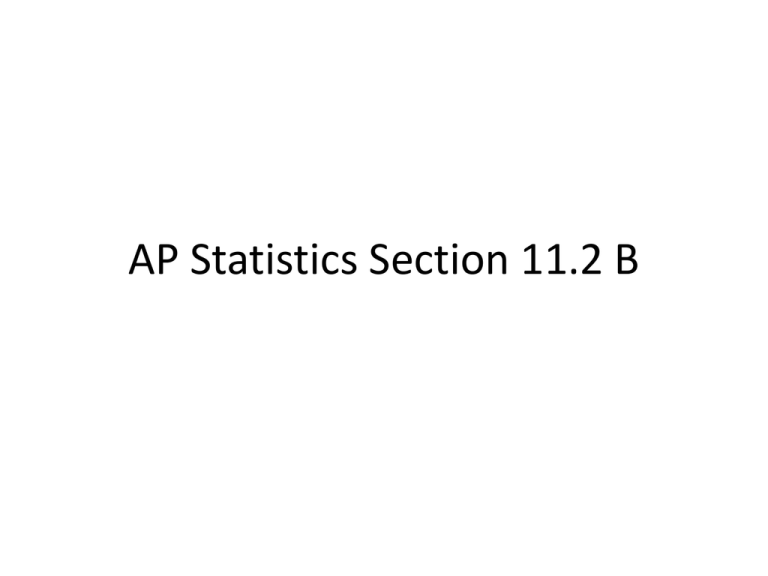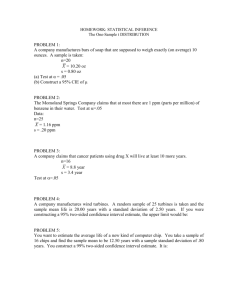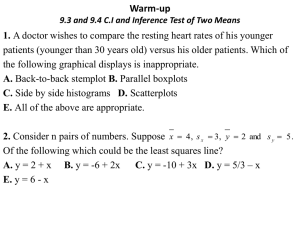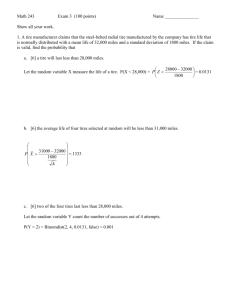pp Section 11.2B
advertisement

AP Statistics Section 11.2 B A 95% confidence interval captures the true value of in 95% of all samples. If we are 95% confident that the true lies in our interval, we are also confident that values of that fall outside our interval are incompatible with the data. That sounds like the conclusion of a significance test. Confidence Intervals and Two-Sided Tests A level two-sided significance test rejects H 0 : 0 whenever the value 0 falls 1 outside a level ______ confidence interval for . The link between two-sided significance tests and confidence intervals is called _______. duality The following example illustrates this link. Example 1: The Deely Laboratory analyzes specimens of a drug to determine the concentration of the active ingredient. Such chemical analyses are not perfectly precise. Repeated measurements on the same specimen will give slightly different results. The results of repeated measurements follow a Normal distribution quite closely. The analysis procedure has no bias, so the mean of the population of all measurements is the true concentration of the specimen. The standard deviation of this distribution is a property of the analysis method and is known to be 0 . 0068 . The laboratory analyzes each specimen three times and reports the mean result. A client sends a specimen for which the concentration of active ingredient is supposed to be 0.86%. Deely’s three analyses give concentrations 0.8403 0.8363 0.8447 Is there significant evidence at the 1% level that the true concentration is not 0.86%? Let’s do both a significance test and a 99% confidence interval. Hypothesis: The population of interest is all specimens for this type of drug. We wish to test the claim that the mean concentration of the active ingredient is not .86%. H 0 : . 86 % H a : . 86 % Conditions: SRS: I will assume the sample is an SRS, but if it is not, the results may not generalize to the population. Normality of x : Population is Normal so the distribution of x will be Normal. Independence: Must assume N (10)(3) or 30. Calculations: z . 8404 . 86 . 0068 4 . 99 3 P - value 2(.0002) .0004 Note : .0002 is from the table Interpretation: Since the p-value of .0004 < the significance level of .01, we reject the H0. We conclude that the mean concentration of the active ingredient in this drug type is not .86%. Parameter: The population of interest is all specimens for this type of drug. We wish to estimate the true mean concentration level of the active ingredient in this drug. Conditions: Calculations: xt s n . 8404 2 . 576 . 0068 3 (. 8303 ,. 8505 ) Interpretation: We are 99% confident that the true mean concentration level of the active ingredient in this drug is between .8303% and .8505%. What if the null hypothesis in Example 1 had been H : . 85 ? Would we still reject H : . 85 in favor of the two-sided alternative H : . 85 ? 0 0 a NO , since .85 now lies in the 99% confidence interval, we would not reject H 0 : . 85 in our .01 significan ce test. . 8303 . 8505 . 85 . 86











